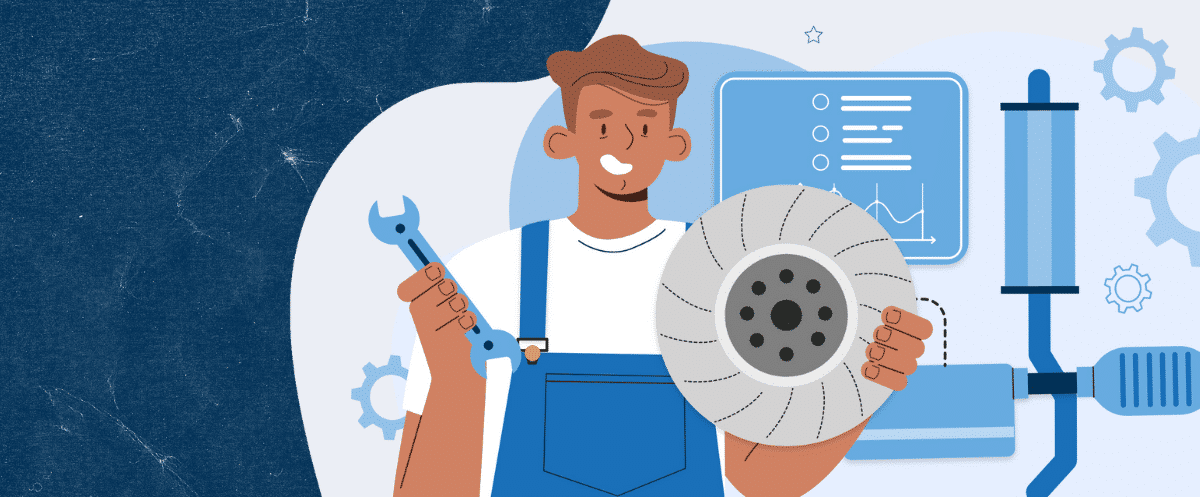
Spare parts price optimization is a key factor in aftermarket business, but how can you make sure you get the process right? In this article, Kalle Aerikkala, Business Consultant at Vendavo, explains everything you need to know to get your spare parts in front of the right customers at the right price exactly when they need them.
Spare parts price optimization is important for a lot of reasons. It’s all about helping companies find the sweet spot between the price their customers are willing to pay and what will keep them profitable.
But it’s not just about money.
It’s also about staying ahead of the competition and keeping customers satisfied so they remain loyal, come back again and again, and want to refer your company to their own contacts. This makes spare parts price optimization a smart business decision.
Let’s explore everything you need to know about it.
Price optimization (and why it matters)
There are many ways to define price optimization. Some focus on market conditions or staying competitive, but all have factors in common: maximizing business objectives like profit, revenue, market share, and customer satisfaction.
For this blog, we mean setting a price for a segment that best fits a customer’s willingness to pay and that creates an uplift in profitability.
It’s not always a good idea to try to sell to every possible customer in a particular group, though. Some may be willing to pay so little that you would lose money on those sales.
We need to find a balance between setting the right price and ensuring that your business can make a profit. We call this “price sensitivity.”
For effective price optimization, you need a basic understanding of pricing concepts like value-based and market-driven pricing. Success here occurs within the “pricing window,” which is the range your company should stay within to set prices for products or services.
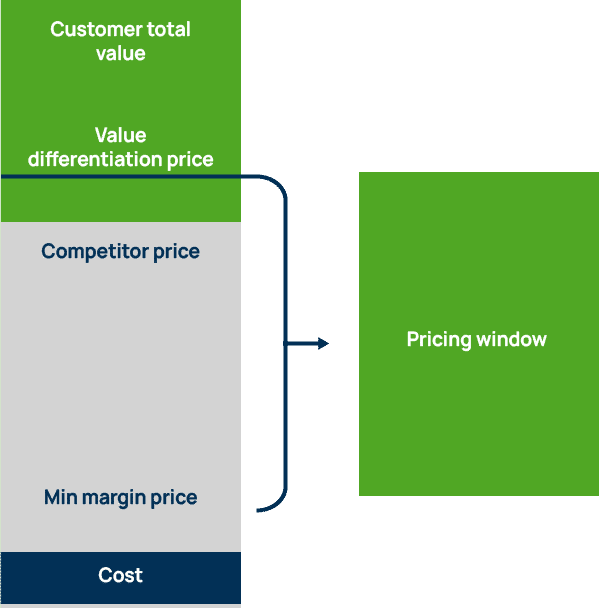
In the world of spare parts, you need to understand what makes your products valuable and how competitors price similar items. This helps identify key moments that impact the balance between price and sales volume, particularly when customers switch between brands. Knowing how customers react to price changes is essential.
It helps to focus on price sensitivity rather than elasticity.
What to know about price sensitivity and price elasticity
Price elasticity refers to the change in demand when there is a change in price. In spare parts, demand is most influenced by the need to repair or prevent a breakdown – which is rarely influenced by price.
Price can impact the timing of a purchase. Customers may buy sooner or wait longer depending on current cost, so price becomes essential when selecting a supplier. Price influences demand, too, because customers can fulfill their needs from any of multiple suppliers. Having the right price is key to them choosing your company’s offerings.
Price elasticity is most commonly modeled as linear or curved, and that supports the use of price sensitivity. This is not always the case in spare parts, though. Suppliers are competing for the same customers, so the features that make products stand out impact the elasticity curve. For this reason, price sensitivity models must only suggest prices within the right range. Going outside that range could negatively impact sales volume.
When looking at how prices and sales relate in the spare parts business, we have to think about another factor: market size.
Market size is crucial in optimizing spare part prices. We determine market size by looking at the installed base information, which might be something like carpark data in the automotive realm or a crucial data point in industrial settings.
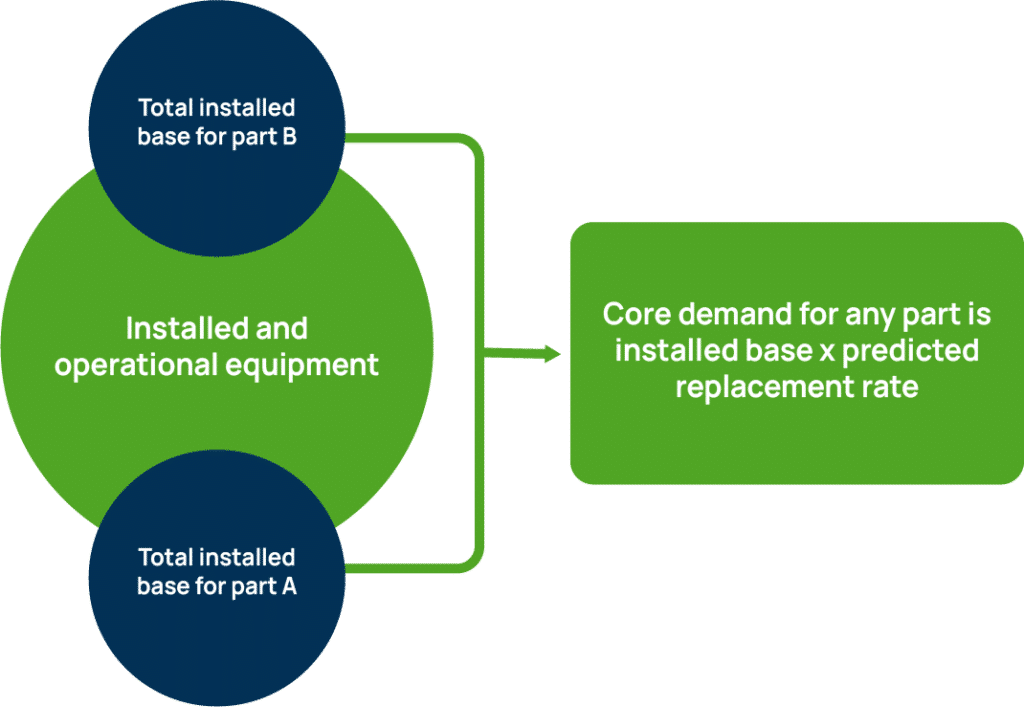
We need to keep market size in mind when creating models to understand price sensitivity. It doesn’t make sense to use one that suggests prices leading to sales that are higher than the total market potential, for example. The same applies when optimizing prices within the price waterfall.
How to optimize prices within the price waterfall
Prices are usually set at both global and local levels in the spare parts business, and various discount schemes are then applied across the customer hierarchy. The important question here is when should we optimize prices in this process?
The price types that need optimizing include global, regional, local, customer group, and customer-specific.
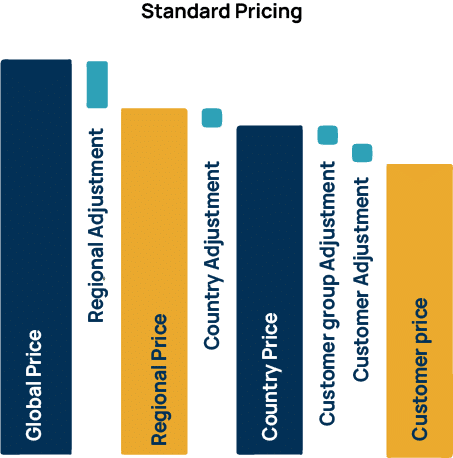
To select the right price, be sure to ask:
- Do we negotiate prices with customers?
- Do we differentiate pricing globally with strict frameworks or manage large amounts of exceptions?
- Is a significant share of our business done through ecommerce?
If you negotiate prices with customers, focus on customizing customer net price. If you don’t, then focus on one of the list prices – especially if global adjustments impact them. If there is a system where global price changes affect market list prices, optimizing global price is the way to go. If market prices are set independently, though, optimize market prices instead.
When can list prices be optimized?
If customer-negotiated prices aren’t the main factor in pricing success, you can focus on optimizing list prices. This works well when customer net prices are mostly based on the list price, either directly or through discounts.
You can optimize list prices globally or locally:
- Use the global level if local prices align with the global ones through a framework.
- For more local flexibility – or if there are a lot of exceptions – it’s better to optimize list prices locally.
Let’s take a look at some of the approaches that can help here.
Optimization approaches for list prices
It’s important to look at the entire potential market when optimizing list prices. The goal is to find the best price for maximum revenue or profit. Tracking price sensitivity here helps determine this optimal price.
There are multiple approaches you can use to stay within an acceptable price range:
- Absolute price sensitivity
Optimize list price based on absolute sales volumes of different price levels.
- Price change sensitivity
Optimize list prices based on sales volume changes resulting from relative price changes.
- Relative price sensitivity
Optimize list prices with price positioning data and related absolute sales volumes.
Absolute price sensitivity is the most common and recommended method here. There are a few things to keep in mind, however:
- Consider the overall market price level changes in your data.
It’s best to use data from more than one year in price sensitivity modeling for the aftermarket, but remember that overall price level might change over time. You may need to correct that effect in your data when building your price sensitivity model.
- Choose the appropriate level for price sensitivity modeling
Are you creating the price sensitivity model for individual products or on an aggregated level? Choose the right level to make sure you get enough data and can adapt prices effectively.
- Target the modeling to the right assortment
In the aftermarket, some products have limited alternatives for customers. Be especially careful with these products if applying price changes based on price sensitivity.
If the absolute price sensitivity model doesn’t give useful results, you can use the price change sensitivity and relative price sensitivity approaches ti create better results.
What to know about price optimization for eCommerce
If your aftermarket business involves eCommerce, this opens more chances for optimizing prices. All the methods above work for eCommerce, too, and there’s usually more data available. This makes modeling easier and more reliable, because you can easily get data on product views, purchases, and user time spent on the site, among other factors. This information can then be used alongside or instead of price sensitivity modeling.
Here are some of the important aspects of this process:
- Tackling customer price optimization
If your business negotiates prices with customers, focus on optimizing customer net price. This involves creating segments and figuring out the right discount for each.
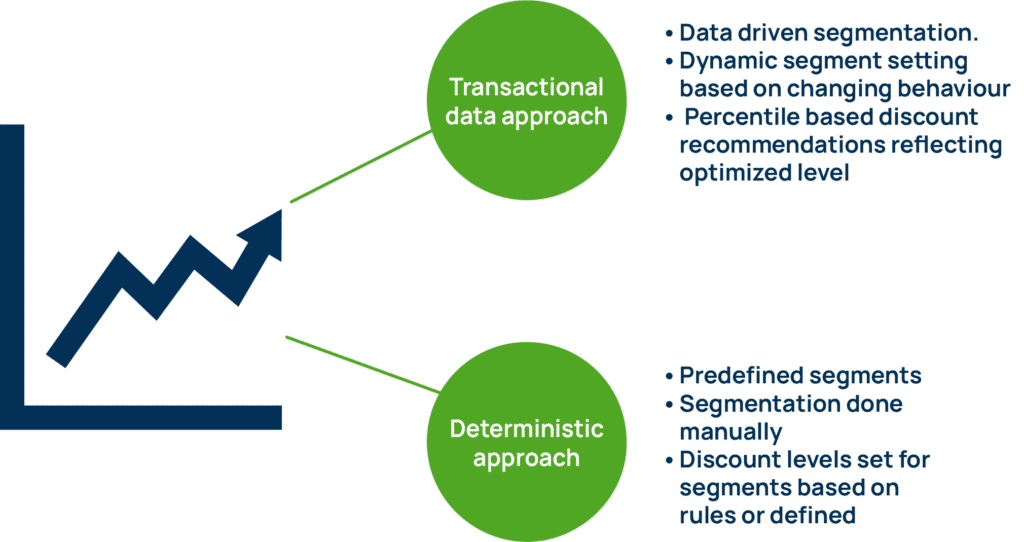
- Creating segmentation
First use a scientific and statistical approach to find out how much customers are willing to pay, then figure out the discount from a country’s price (see Figure 1). Organizations that do not have enough historical data for the segmentation model can use a deterministic approach, which sets segmentation and discounts based on rules and manual decisions.
- Finding the right discount
Begin by looking at the share of the existing customer base to calculate price sensitivity. A high share in a particular segment suggests strong pricing power, providing a chance to boost profits by raising prices. There may be an opportunity to attract more business by lowering prices in segments with lower market share, but this should be handled carefully. That’s because offering higher discounts will require a large increase in sales volume to maintain previous profitability levels.
- Achieving optimization
The last step in optimization is regularly checking how changes in captured market share relate to price changes. Analyzing causality helps figure out how price, volume, and other changes impact profitability. It also helps evaluate the connection between price and volume changes, which allows for adjustments in pricing.
Is it all about price?
The short answer is no.
Customers need spare parts when something breaks down, but services and availability is just as crucial as price when they choose a supplier. Considering all these components creates “value differentiation,” which elevates your company above your competitors.
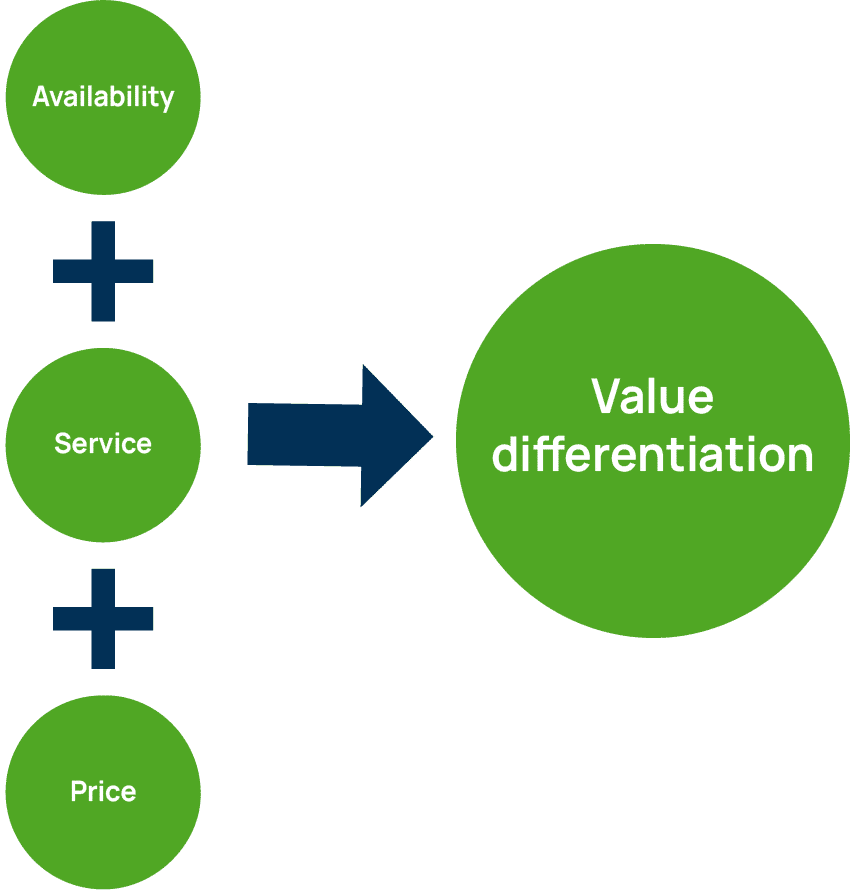
The balance here is important, because the real issue for improving sales and profits might be something other than price. If you focus on price without considering the value aspect, you might make the wrong decision about changing the price.
Price optimization in service agreements and subscriptions
As aftermarket businesses become more advanced, they often introduce new services like long-term agreements and subscriptions. When spare parts are part of these agreements, the price of each individual spare part becomes less critical.

It’s still important to optimize spare part prices, however – even when they are included in service agreements. Some customers will adopt these new contracts, while others will stick to one-time purchases.
A key factor here is understanding each customer segment’s preferences, and balancing prices between the options is crucial. Where your company is on the maturity scale determines whether you should focus more on long-term agreements or individual spare part pricing strategies.
5 things you need in spare parts price optimization
Getting spare part pricing right across the whole pricing waterfall is significant, valuable task. Spare parts can be a reliable source of revenue and profit for many companies.
To succeed in spare parts pricing optimization, follow these five steps:
- Get the foundation right
Determine your pricing window. Have a solid price waterfall in place. Make sure you can do efficient price changes. This also includes ensuring customer value alignment in list prices, differentiation value based on competition, and linking global price management and local pricing to create a logical structure.
- Start with the data you have
Explore whether you can model price sensitivity or create segmentation with your current data. Understand data limitations and data availability for different product types. Make a data enhancement plan if you lack the necessary data today. It is better to amend data with deterministic rules and segmentation than to do nothing. You can create meaningful data by running price experiments.
- Focus on your customers
Understanding customer behavior and willingness to pay is at the heart of price optimization, regardless of the method selected. Look and listen for customer feedback.
- Remember the spare part specifics
Market size is determined by the installed base. There is more to spare parts than the physical part and its price.
- Ensure alignment to the service portfolio
Decide the primary business model that needs to be in the driver’s seat for price optimization.
Mastering spare part pricing across the pricing waterfall is crucial when seeking a reliable source of revenue and profit. Following these steps will help you better navigate the complexities in spare part pricing optimization and unlock its full potential for financial success.
How Vendavo can help
Spare part price optimization is important for many business reasons, including maximizing profitability, improving your competitive advantage, boosting customer satisfaction, and ensuring you can respond quickly to shifting market dynamics. The result is improved sales volume, inventory management, decision-making, and adaptability to customer preferences, all of which will help you win the deal when customers need spare parts.
If your company can offer the right products at the right price to the right customers at the right time – when they need spare parts the most – you’ll be creating long-term partnerships that will have lasting business impacts.
Reach out to Vendavo to learn more about how our team can help.